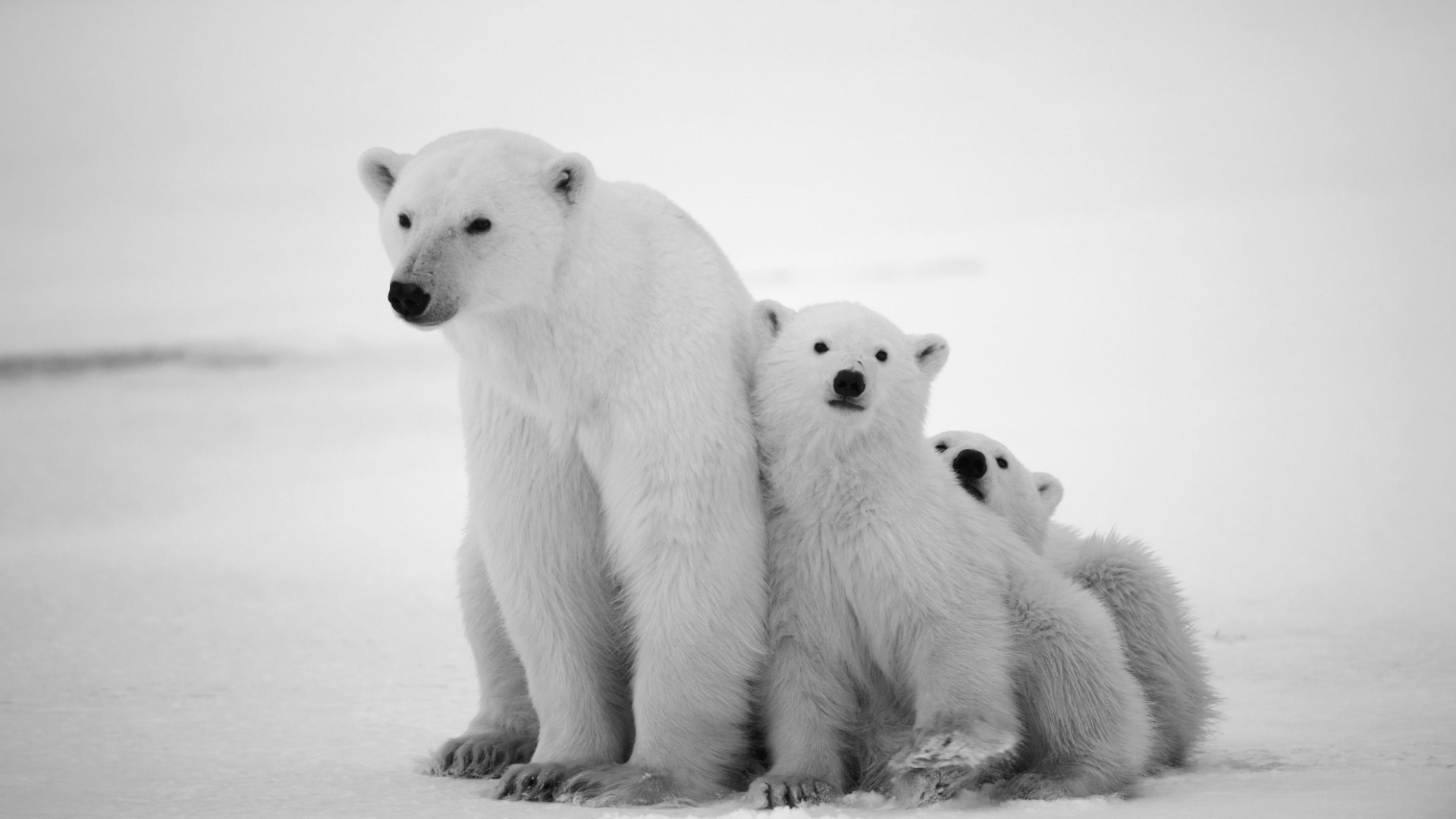Polar bears, the majestic creatures of the Arctic, are not just fascinating due to their size and strength, but also for their distinct adaptations and behaviors.
Understanding these incredible animals can provide insights into the broader Arctic ecosystem and the challenges they face due to climate change.
Let’s explore fascinating aspects of polar bears that highlight their uniqueness and importance.
1. Polar Bear Habitat
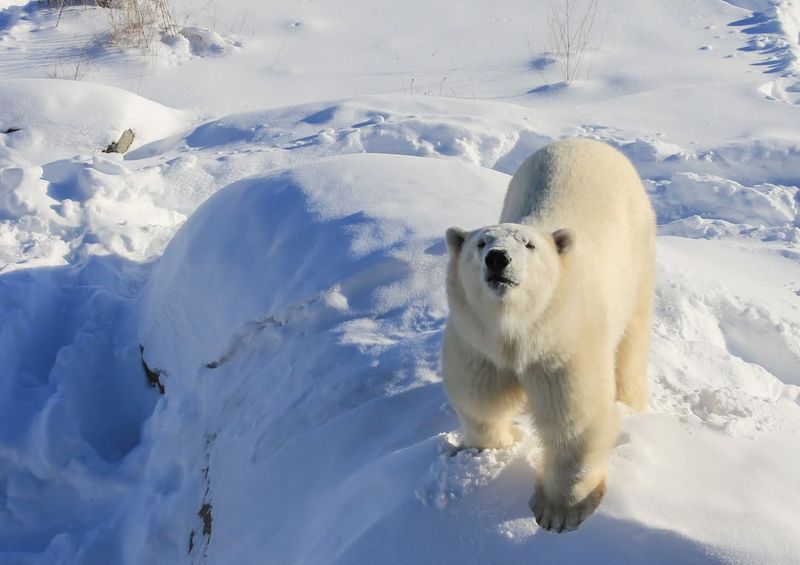
Polar bears are native to the icy cold waters of the Arctic, where they rule the ice-covered seas. These magnificent creatures are primarily found in regions like Alaska, Canada, Russia, Greenland, and Norway. Adapted to life on the sea ice, they spend most of their time on the ice hunting for seals, their primary prey.
The habitat of polar bears is characterized by vast expanses of sea ice, essential for their survival. Sea ice serves not just as a platform for hunting but also as a crucial area for breeding and migration. As climate change progresses, polar bears face the challenge of diminishing sea ice, which affects their ability to hunt and breed.
The loss of habitat forces them to travel greater distances, putting them at risk of starvation and decreasing their chances of reproducing successfully. Additionally, with the ice melting earlier in the year and forming later, the duration of time polar bears have to hunt and store fat is significantly reduced.
2. Polar Bear Diet
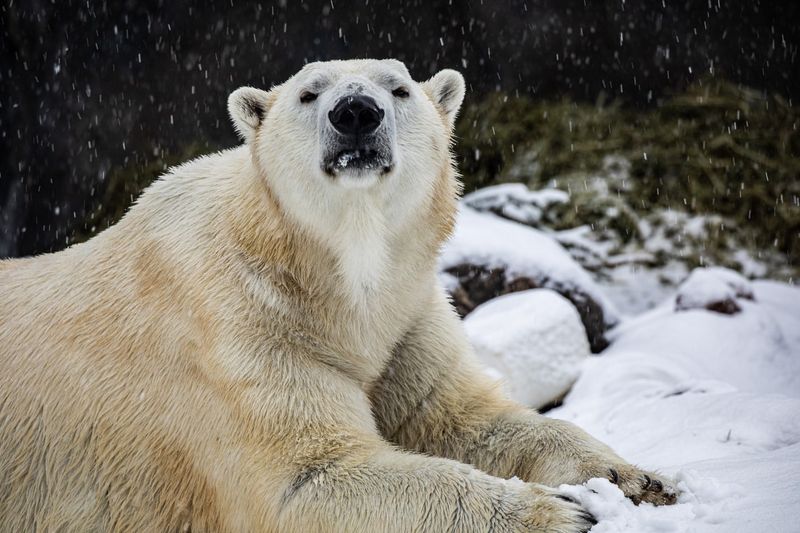
The diet of a polar bear is primarily carnivorous, with seals being their main source of food. They rely heavily on the fat-rich blubber of seals, particularly ringed and bearded seals, to meet their nutritional needs. This high-fat diet is vital for polar bears to maintain their energy levels and sustain them during the harsh Arctic winters.
Polar bears are skilled hunters and can detect seals hidden beneath the ice from great distances. They use a method known as still-hunting, where they wait patiently by seal breathing holes and snatch them as they come up for air. Unfortunately, the decline in sea ice due to global warming poses a serious threat to their hunting practices, making it increasingly difficult for them to catch seals.
In times of scarcity, polar bears might scavenge carcasses or consume other available marine mammals, birds, and eggs, but these alternatives do not provide the necessary energy. This shift in diet can lead to malnutrition and impact their overall health.
3. Physiology
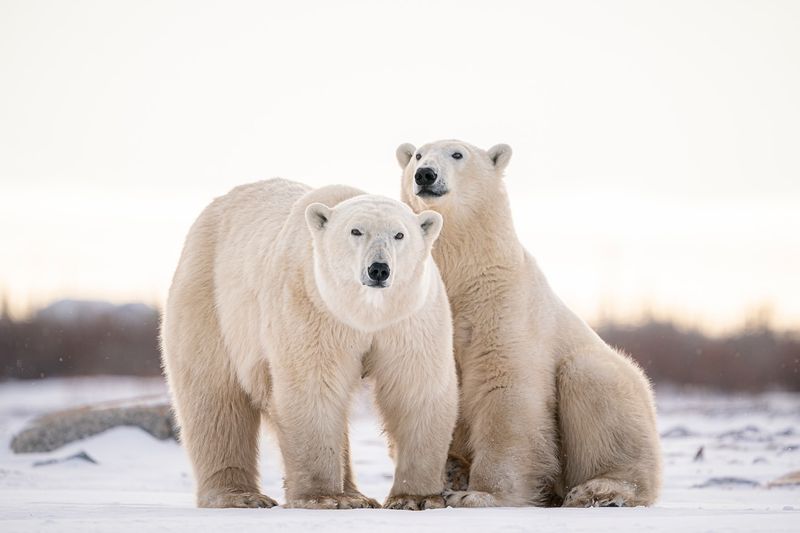
Their thick, white fur plays a crucial role in insulation, keeping them warm even in sub-zero temperatures. Beneath this fur lies black skin that absorbs heat from sunlight, further aiding in their warmth retention. Additionally, polar bears possess a layer of fat, known as blubber, which can be up to 4.5 inches thick. This blubber helps insulate their bodies and provide buoyancy in icy waters.
Their large paws, measuring up to 12 inches across, are adapted for walking on thin ice and swimming. The paws are covered with small, soft papillae and have long, curved claws to provide traction and grip.
These incredible adaptations not only allow polar bears to conserve heat and energy but also make them excellent swimmers, capable of covering long distances in search of food. However, the ongoing environmental changes pose a significant threat to their ability to survive in their natural habitat.
4. Behavior
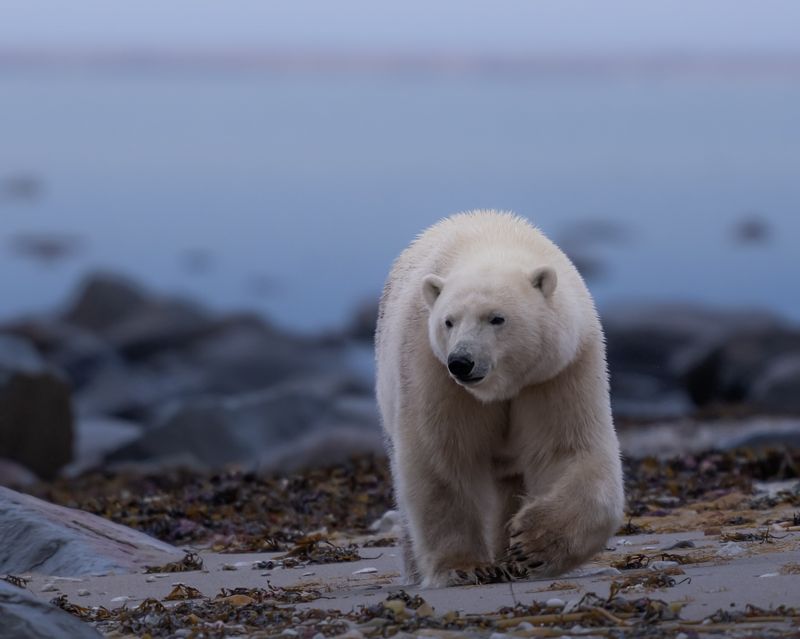
Despite their solitary nature, they exhibit a range of behaviors that are both fascinating and complex. For instance, they are known for their playful demeanor, often seen sliding on ice or playing with objects.
Mothers are incredibly nurturing, providing constant care to their cubs during their early years. They teach them essential survival skills such as hunting and navigating the Arctic terrain. Cubs stay with their mothers for about two and a half years before venturing out on their own.
Social interactions among polar bears are generally limited, but when they occur, they involve a range of vocalizations and body language. These interactions can include displays of dominance and submission or playfulness.
5. Reproduction
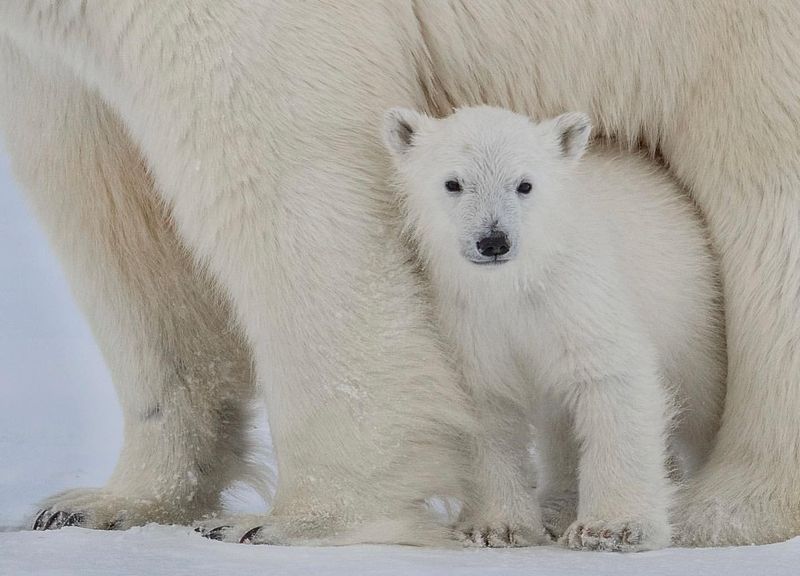
Reproduction in polar bears is a critical aspect of their life cycle, involving a series of stages that ensure the continuation of their species. Mating typically occurs between April and May, with males seeking out females by following their scent. After mating, females undergo a period of delayed implantation, where the fertilized egg does not immediately implant in the uterus. This process allows the mother to time the birth of her cubs with optimal conditions.
Cubs are usually born between November and January in maternity dens made from snow and ice. Newborns are incredibly vulnerable, blind, and weigh less than a kilogram. The mother remains in the den, nurturing her cubs, until they are strong enough to venture outside, usually around March or April.
Her dedication is evident as she fasts throughout this period to provide for her young. Understanding these reproductive habits is essential for their conservation, especially as climate change threatens the stability of denning sites.
6. Polar Bear Population
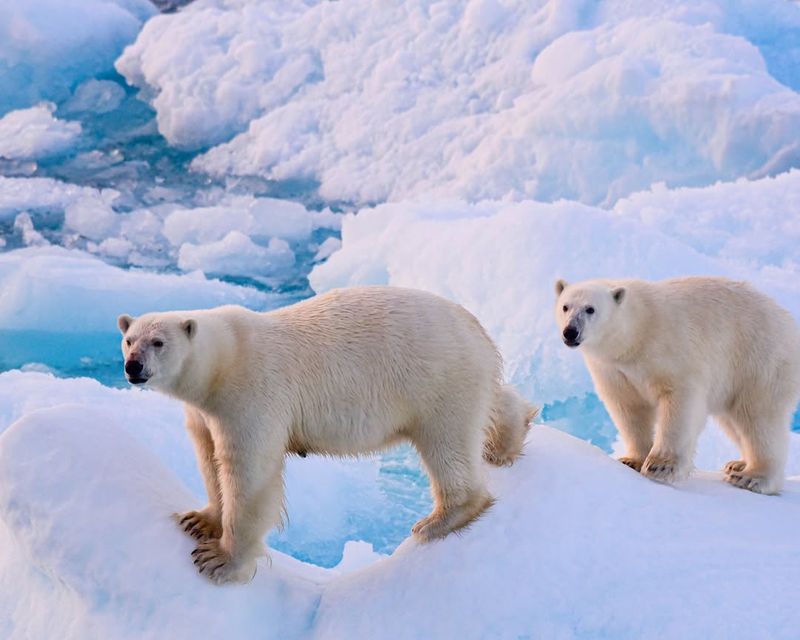
The global population of polar bears is estimated to be between 22,000 and 31,000, divided into 19 distinct subpopulations across the Arctic. These subpopulations inhabit regions that vary in terms of climate, food availability, and human interaction, leading to differences in their behaviors and survival strategies.
Monitoring polar bear populations is crucial for understanding the impacts of environmental changes and for implementing effective conservation strategies. Researchers use various methods, including aerial surveys and genetic analysis, to track population trends and health. Despite these efforts, certain subpopulations remain poorly studied due to their remote locations.
Climate change poses the most significant threat to polar bear populations, as the loss of sea ice directly affects their ability to hunt and breed. Conservationists are working tirelessly to protect critical habitats and mitigate the effects of global warming.
Public awareness and cooperation with indigenous communities are also essential components of these efforts, ensuring the preservation of polar bears for future generations.
7. Conservation Efforts
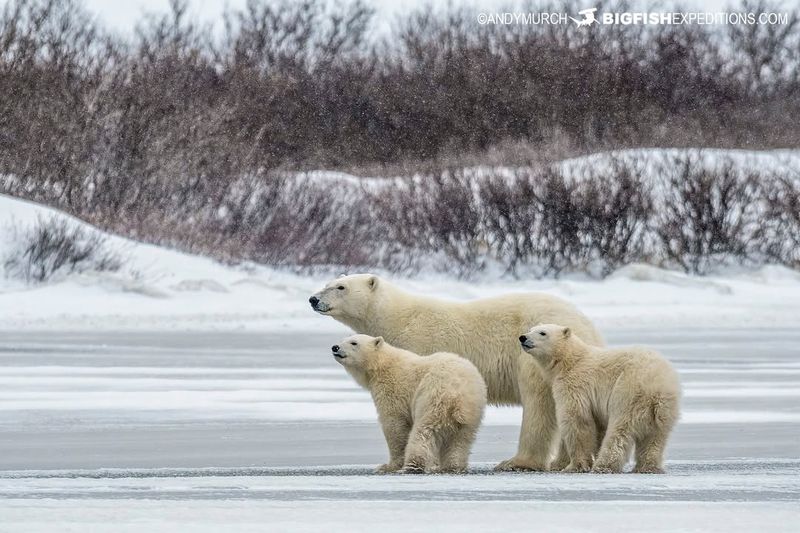
Conservation efforts for polar bears are vital in ensuring their survival amid the changing Arctic environment. Organizations worldwide are dedicated to studying and protecting these magnificent creatures through various initiatives and programs. Key strategies include monitoring population dynamics, protecting habitats, and advocating for policies that address climate change.
Researchers collaborate with local communities and governments to gather data, track polar bear movements, and assess the health of different subpopulations. These efforts are crucial for understanding how polar bears adapt to environmental changes and for developing effective conservation strategies.
Public awareness campaigns play an integral role in conservation efforts, educating people about the challenges polar bears face and the steps needed to protect them. Supporting sustainable practices and reducing carbon footprints are actionable ways individuals can contribute to these efforts.
8. Communication
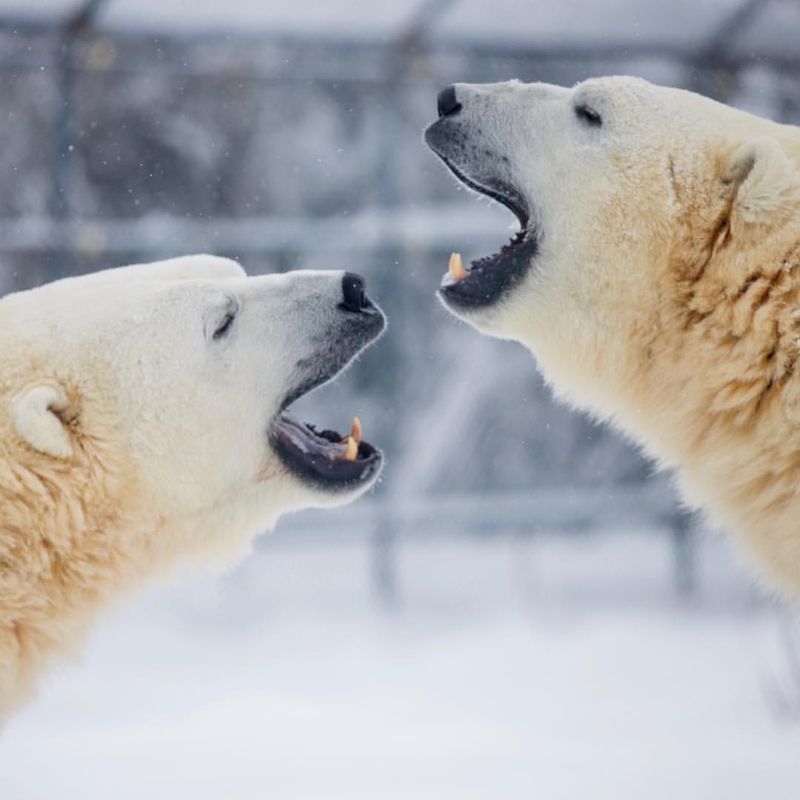
Polar bears communicate through a variety of vocalizations and body language. While they are solitary animals, understanding their communication methods is essential for studying their social interactions and behaviors. Vocalizations include growls, roars, and hisses, which serve different purposes.
For instance, a mother may use soft chuffing sounds to communicate with her cubs, while growls and roars are typically used during aggressive encounters or to establish dominance. Cubs often whimper or make a nuzzling sound to seek attention or comfort from their mothers.
Body language is another crucial aspect of polar bear communication. They use their body posture, facial expressions, and grooming behaviors to convey messages to other bears. For example, a submissive bear may lower its head and ears, while a dominant bear stands tall with its head held high.
9. Polar Bear Adaptations
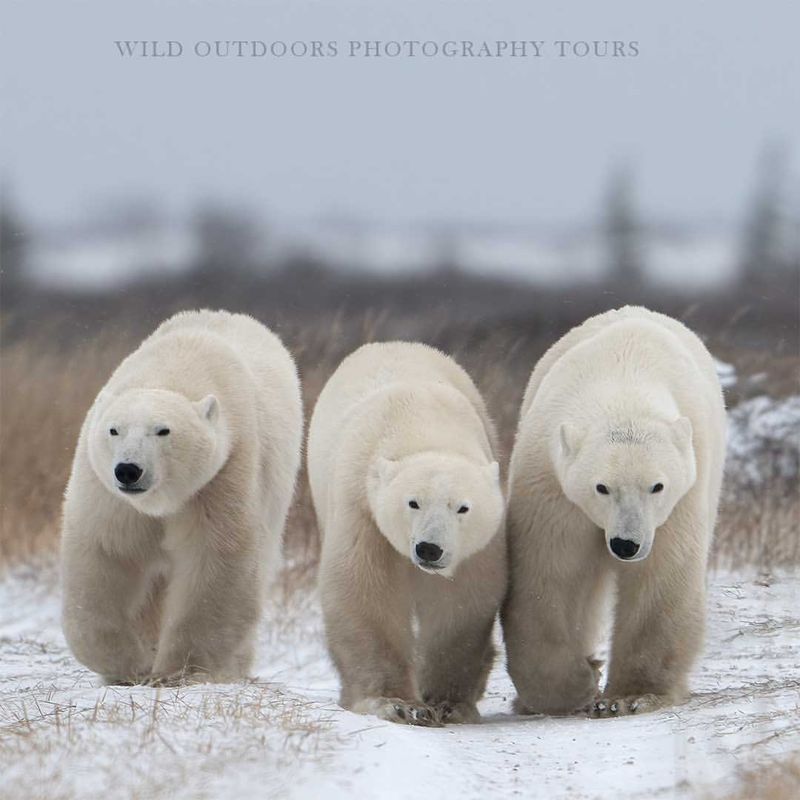
Polar bears have evolved remarkable adaptations that allow them to thrive in the harsh Arctic environment. These adaptations encompass physical, behavioral, and physiological traits that enhance their survival capabilities in one of the planet’s most extreme habitats. One significant adaptation is their ability to swim long distances in cold water. Polar bears are excellent swimmers, using their large, powerful front paws to propel themselves through the water.
Their streamlined bodies and buoyant fat layer help them conserve energy and stay afloat during extended swims between ice floes. In addition to their swimming prowess, polar bears have adapted to minimize heat loss. Their thick fur, black skin, and blubber work together to retain warmth, while their circulatory system can reduce blood flow to extremities to maintain core body temperature.
These adaptations are crucial for survival, especially as sea ice continues to recede due to climate change, forcing polar bears to cover greater distances in search of food and stable habitats.
10. Polar Bear Threats
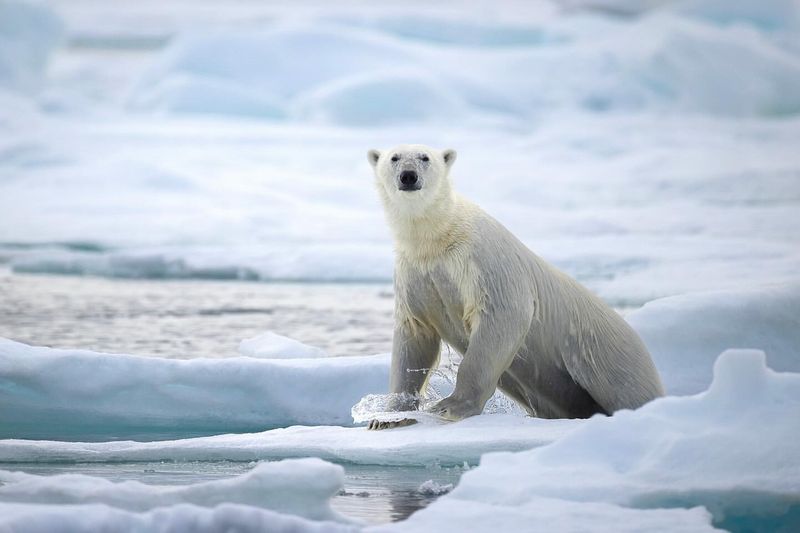
Polar bears face numerous threats that jeopardize their survival, with climate change being the most critical. The warming Arctic climate leads to the rapid melting of sea ice, essential for polar bear hunting, breeding, and traveling. As sea ice declines, polar bears are forced to travel longer distances to find food, increasing the risk of starvation.
Besides climate change, polar bears are also threatened by human activities such as oil and gas exploration, shipping, and pollution. These activities can lead to habitat destruction, increased human-bear conflicts, and exposure to harmful pollutants like heavy metals and plastics, which accumulate in their bodies over time.
Efforts to mitigate these threats involve global cooperation to reduce greenhouse gas emissions, protect critical habitats, and minimize human impact. Promoting sustainable practices and supporting conservation policies are crucial steps in ensuring a future for polar bears.
Raising public awareness about these challenges is essential for garnering support and driving action to preserve these incredible creatures and their Arctic home.
11. Intelligence
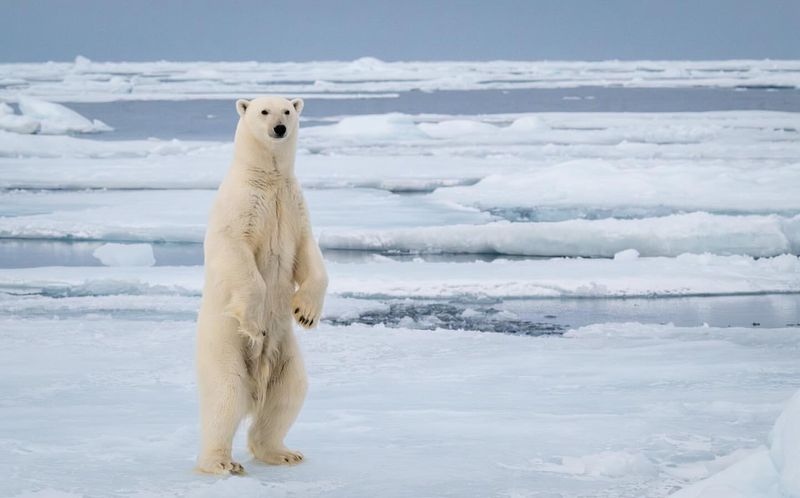
These animals possess remarkable intelligence, displaying keen problem-solving skills and adaptability in their challenging environment. This cognitive prowess is evident in their hunting strategies, navigation abilities, and interactions with other bears. Their intelligence is most apparent during hunting. Polar bears can identify seal breathing holes and use a technique called still-hunting to patiently wait for seals to surface.
They also demonstrate resourcefulness by using tools like ice blocks to break through thicker ice layers or to access prey. In addition to their hunting skills, polar bears exhibit a strong sense of direction and memory, allowing them to navigate vast Arctic landscapes and return to specific locations, such as denning sites or productive hunting grounds.
Their ability to learn from experience and adapt to changing conditions is crucial for their survival, especially as their environment undergoes rapid transformations due to climate change. Understanding and appreciating their intelligence can help in designing better conservation strategies.
12. Lifespan
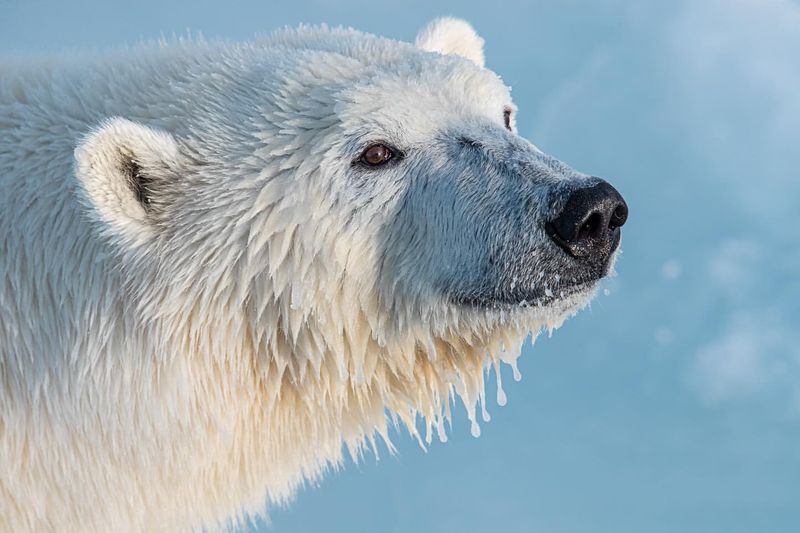
The average lifespan of a polar bear in the wild ranges from 15 to 20 years, although some can live beyond 30 years under favorable conditions. The longevity of these majestic animals is influenced by factors such as environmental conditions, food availability, and human-related threats.
In their early years, cubs face numerous challenges, with survival dependent on their mother’s ability to provide food and protection. As they mature, young bears must learn essential skills like hunting and navigation to thrive independently.
Adult polar bears, particularly males, often engage in aggressive encounters during mating season, which can impact their lifespan. The aging process brings its own set of challenges, as older bears may experience reduced hunting efficiency and increased vulnerability to environmental changes or health issues.
Efforts to mitigate threats like climate change and habitat loss are vital in ensuring polar bears have the opportunity to live full, healthy lives. Understanding the factors that influence their lifespan helps in developing effective conservation strategies and policies.
13. Migration
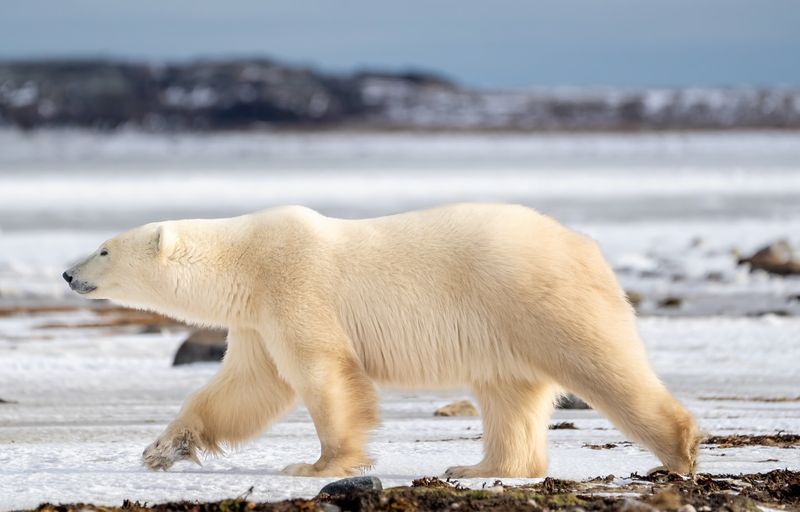
As the ice melts and reforms throughout the year, polar bears follow its ebb and flow, moving to areas where hunting opportunities are best. In regions where sea ice is more stable, polar bears maintain a relatively consistent range, while in areas with significant seasonal ice changes, they may travel hundreds of miles in search of food.
This movement is crucial for accessing seal populations and ensuring their caloric needs are met. Climate change has disrupted these traditional migratory patterns, as the timing and extent of sea ice formation have become unpredictable.
Consequently, polar bears are forced to roam further or rely on alternative, less nutritious food sources on land, increasing the risk of malnutrition and conflicts with humans. Understanding these migration patterns is essential for conservation efforts, helping to address the challenges posed by a rapidly changing Arctic environment.
14. Interaction With Humans
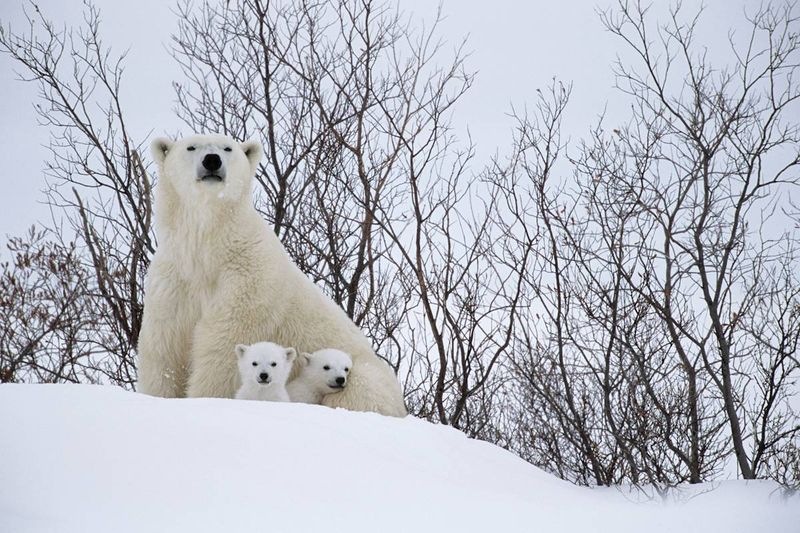
Human interaction with polar bears is a complex and multifaceted relationship that encompasses both awe and concern. These majestic creatures captivate people worldwide, drawing tourists to the Arctic regions to witness them in their natural habitat. While tourism can provide economic benefits to local communities, it also poses challenges.
Increased human presence can lead to disturbances in polar bear behavior, potentially affecting their hunting and breeding patterns. It is essential to promote responsible tourism practices that minimize impact and ensure the safety of both bears and visitors. Conversely, polar bears sometimes venture into human settlements in search of food, leading to conflicts and safety risks.
Communities in polar bear regions implement strategies to manage these interactions, such as secure food storage and bear patrols. Education and awareness programs are crucial in fostering coexistence and ensuring that both humans and polar bears can thrive in shared environments. Balancing conservation and community needs is key to addressing the challenges of human-polar bear interactions.
15. Hunting Skills
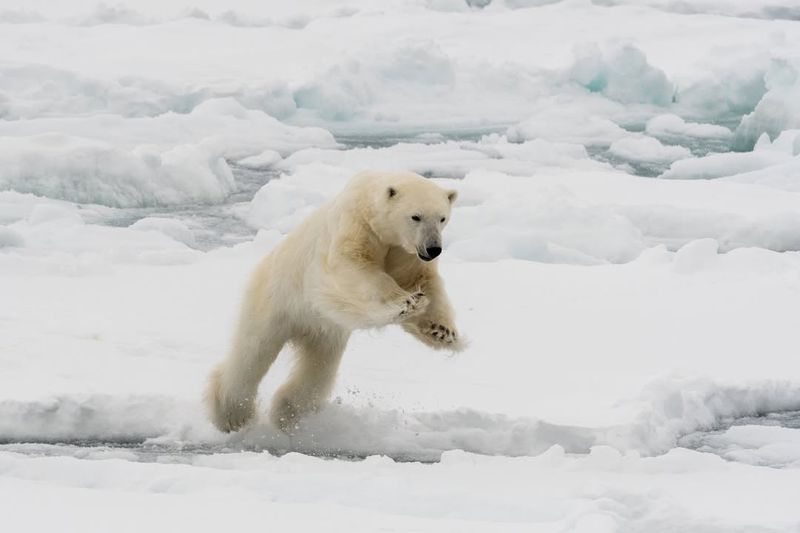
Polar bears are apex predators, renowned for their extraordinary hunting skills and strategies. These skills are essential for their survival, as they rely heavily on hunting seals to meet their nutritional needs. One of the most effective hunting techniques employed by polar bears is known as still-hunting. They locate seal breathing holes in the ice and patiently wait, often for hours, for a seal to surface.
When the moment arrives, they strike swiftly with powerful paws to catch their prey. This method requires patience, precision, and remarkable sensory abilities. In addition to still-hunting, polar bears may also stalk seals basking on the ice. They use the cover of snow and ice to approach their prey stealthily, often crawling on their bellies to remain undetected.
These hunting strategies highlight the polar bear’s adaptability and intelligence, necessary qualities in the challenging Arctic environment.
16. Polar Bear Cubs
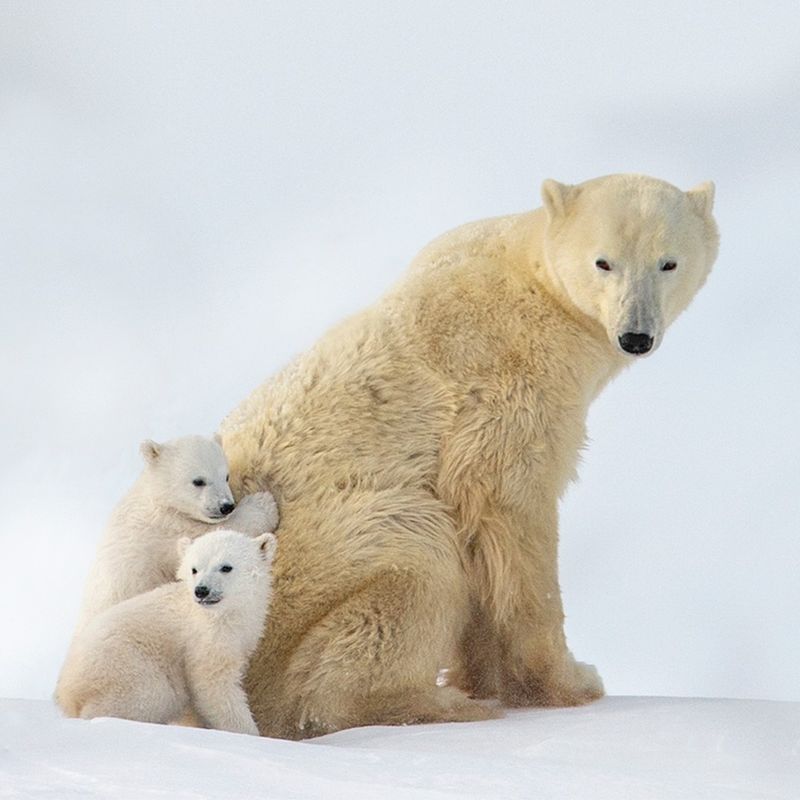
Born in the safety of snow dens, cubs are small, blind, and dependent on their mothers for warmth and nutrition. During the first few months of life, cubs remain in the den, where they are nurtured and protected by their mothers. This period is crucial for their development, as they gain strength and learn essential skills for survival.
Once they emerge from the den, usually in early spring, they begin exploring the world outside, under the watchful eye of their mother. Mothers are dedicated caregivers, teaching their cubs how to hunt and navigate the icy terrain. This training is vital for cubs as they prepare to face the challenges of independent life.
Sadly, the changing climate threatens the survival of polar bear cubs, as the loss of sea ice impacts their mothers’ ability to find food. Conservation efforts must focus on creating a stable environment for cubs to thrive and continue the legacy of polar bears.
17. Climate Impact
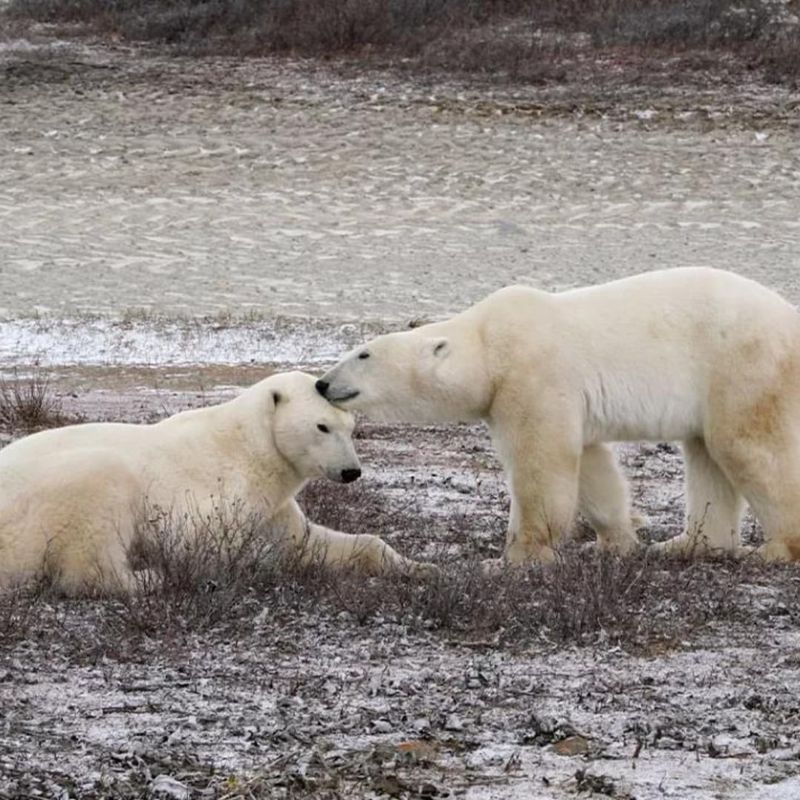
The impact of climate change on polar bears is profound, affecting every aspect of their lives. As the Arctic warms, sea ice, which is crucial for polar bear survival, is melting at an alarming rate. This loss of habitat is the most significant threat to their existence. With diminishing ice, polar bears are forced to travel further to find food, often having to rely on alternative food sources that are less nutritious.
This change in diet can lead to malnutrition and decreased reproductive success, posing a dire risk to their populations. Furthermore, the reduction in sea ice poses challenges for polar bear mothers, who rely on stable ice to create dens for birthing and raising cubs. The instability of their habitat increases the risk of cub mortality and impacts the overall health of the species.
Addressing climate change is crucial for the survival of polar bears, necessitating global efforts to reduce greenhouse gas emissions and preserve their Arctic environment. Public awareness and collective action are vital in supporting these majestic creatures and ensuring their survival in the face of a warming world.
18. Cultural Significance
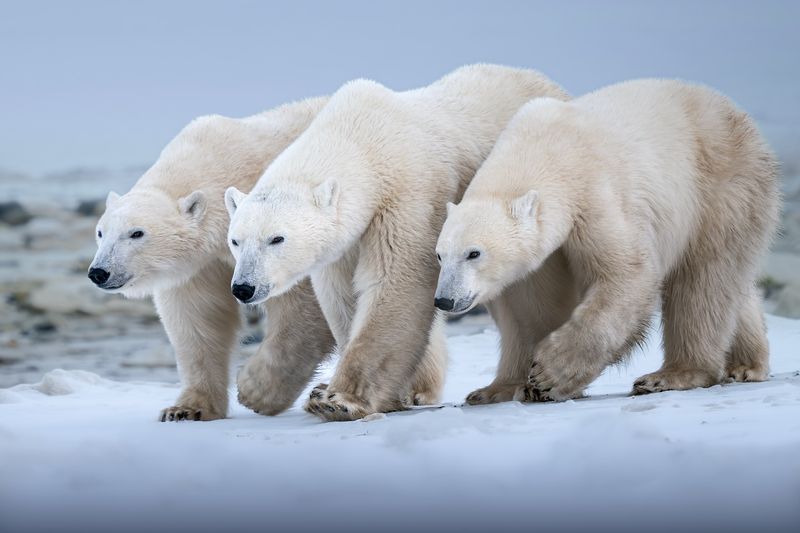
Polar bears hold a significant place in the cultures of indigenous Arctic communities, symbolizing strength, resilience, and the deep connection between people and the natural world. For centuries, these majestic creatures have been integral to the traditions, stories, and livelihoods of Inuit and other indigenous peoples living in the Arctic region.
In many cultures, polar bears are revered as spiritual symbols, representing wisdom and the guardianship of the Arctic. They feature prominently in traditional art, folklore, and ceremonies, reflecting their importance in cultural identity and heritage. The relationship between polar bears and indigenous communities is also practical, as these animals have historically provided sustenance and materials for clothing and tools.
Today, the cultural significance of polar bears continues to play a role in conservation efforts, as indigenous knowledge and practices are vital for sustainable management and protection of these animals. Collaborating with indigenous communities ensures that conservation policies respect and incorporate traditional values, fostering a harmonious coexistence between humans and polar bears in the Arctic.

